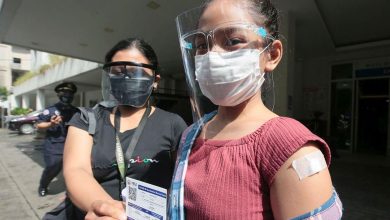Pressure to raise jeep fares grows

By Arjay L. Balinbin, Senior Reporter
THE LAND Transportation Franchising and Regulatory Board (LTFRB) is facing pressure to raise the minimum jeepney fare as fuel prices are expected to continue to soar.
The LTFRB on Tuesday held a hearing on the petition to temporarily restore the minimum jeepney fare to P10 while there is no decision yet on two separate petitions to raise the base fare to P14-15.
LTFRB Chairman Martin B. Delgra III said petition to restore the P10 minimum jeepney fare will now be up for resolution, while the other proposed hikes will be heard on March 22.
Transport groups 1-United Transport Koalisyon (1-UTAK), Pasang Masda, Alliance of Transport Operators and Drivers Association of the Philippines (ALTODAP), and Alliance of Concerned Transport Organizations (ACTO) asked the LTFRB to restore the minimum fare to P10 for jeepneys from the current P9 in the National Capital Region and Regions 3 and 4. The LTFRB decided to “temporarily” reduce the minimum jeepney fare to P9 as diesel pump prices fell in December 2018.
The same groups are seeking a base fare of P14, or an increase of 55.56% from the current minimum jeepney fare, while the Liga ng Transportasyon at Operators sa Pilipinas (LTOP) is asking for a P15 minimum fare.
Greg G. Pua, Jr., counsel for 1-UTAK, Pasang Masda, ALTODAP, and ACTO, said the base fare should be reverted back to P10 pending resolution of their fare hike petition.
He noted the price of diesel was only P38 per liter in December 2018, and when they filed the petition in January 2022, diesel was already around P54.37 per liter.
“And now, because of the current increases, there is an additional P5.85, making the price of diesel around P62 to P63, a big difference from the price of P38 when the LTFRB provisionally reduced the minimum jeepney fare and a difference of P15 when it permanently granted a P10 minimum fare for jeepneys,” Mr. Pua said.
Rep. Vigor D. Mendoza II of 1-UTAK said the average daily fuel consumption of a jeepney is anywhere between 50 to 60 liters.
“We are doing around 3.2 to 3.5 kilometers per liter right now, and we are doing a passenger load of around 300 passengers a day (prior to Alert level 1),” he told the board during the hearing.
“The cost of fuel increase translates to around P1,200 additional expense. That’s 60 liters times the P20 jump — from P40 per liter to P60 per liter. If you have 300 passengers a day, the P4 or P5 we are asking for is just enough to cover this increase in fuel price as well as the increase in spare parts cost,” he added.
The conflict between Russia and Ukraine continues to push fuel prices upwards. Fuel prices increased for the tenth consecutive week on Tuesday: P3.60 per liter for gasoline, P5.85 for diesel, and P4.10 for kerosene. Since the start of the year gasoline, diesel, and kerosene prices per liter have risen by P13.25, P17.50, and P14.40, respectively.
Meanwhile, LTOP President Orlando Marquez invoked the section 4 of LTFRB’s Memorandum Circular No. 2019-035 on fare adjustment formula, which stated: “With due consideration to regional data and other surrounding circumstances, the LTFRB shall, without the need for public hearings and other special proceedings, increase or rollback the fare whenever such change occurs in fuel price.”
But LTFRB’s Mr. Delgra argued that the same memorandum stated that “changes to the formula shall be determined by the LTFRB, subject to the concurrence of the Department of Transportation, on the basis of new findings, studies, and other socioeconomic factors.”
In his presentation, LTFRB Officer-in-Charge for Franchise Planning and Monitoring Diosdado B. Santiago, Jr. cited a report by the National Economic and Development Authority in 2018, saying the proposed hike “would mean fueling further inflationary expectations when these costs are transferred to the consumers.”
To avoid transferring the costs to the consumer, Mr. Santiago said that there is a P2.5-billion fuel cash subsidy under the 2022 budget aimed at supporting around 264,443 jeepney operators and drivers under the LTFRB and 113,000 from other agencies or a total of 377,443 beneficiaries.
Mr. Santiago noted that the government has a service contracting program, but Mr. Pua, the transport groups’ lawyer, said not all jeepney drivers and operators are able to join this program.
In an analysis sent to BusinessWorld, transport expert Rene S. Santiago said the jeepney sector, numbering about 180,000 nationwide, is being killed slowly not just by the pandemic but also the worsening traffic congestion.
“Traffic congestion that crept slowly from 2011 to 2019, effectively reducing their revenue potentials by 50% and simultaneously increasing their fuel consumption by 38%; the PUVM (public utility vehicle modernization) program that set a three-year deadline for operators to replace their old fleet with new vehicles costing more than five times their previous capital; and failure of LTFRB to adjust fares with surging cost of fuel, in violation of its own directive MC-2019-035 dated 26-July 2019,” he added.
“The heaviest blow is on the lowly drivers who absorb the fuel cost and bear the market risk, aside from working more than 8 hours a day. Before the pandemic, the public utility vehicle drivers in Metro Cebu managed to earn about P600/day; a little bit higher at P800 in Metro Manila,” he also said.




